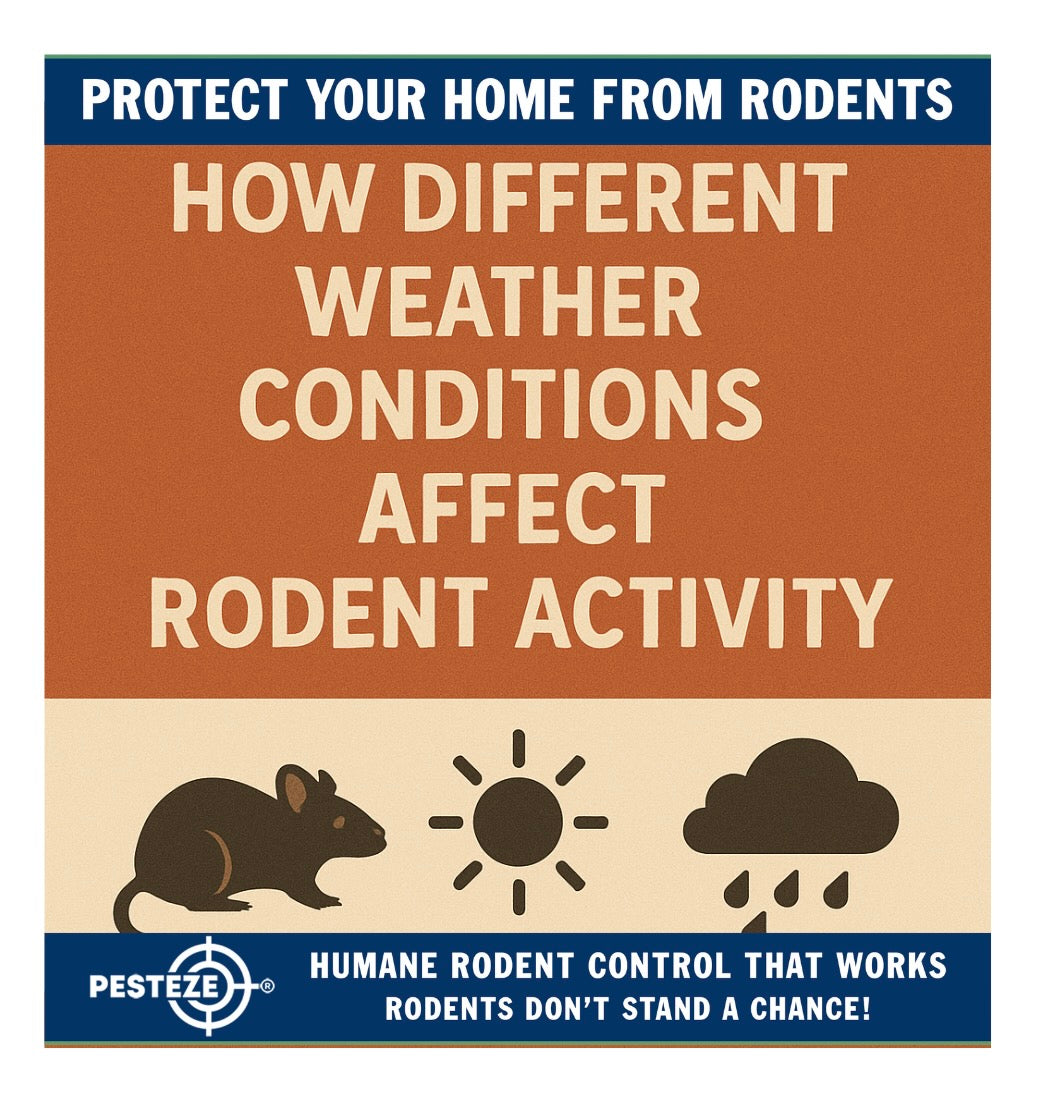HOW DIFFERENT WEATHER CONDITIONS AFFECT RODENT ACTIVITY

HOW DIFFERENT WEATHER CONDITIONS AFFECT RODENT ACTIVITY
SUMMARY
Weather plays a major role in rodent behavior. From heavy rains to heatwaves and cold snaps, environmental conditions can drive rats and mice indoors or change their feeding and nesting patterns. Understanding these patterns helps you prepare and protect your property year-round.
FEATURES
-
Rainy Weather: Flooding can destroy nests and drive rodents into homes and garages.
-
Cold Temperatures: Mice and rats seek warmth in attics, basements, and crawl spaces.
-
Hot Weather: Rodents may move closer to homes in search of water and shade.
-
Seasonal Breeding: Mild weather often leads to population booms in spring and fall.
-
Storm Displacement: Extreme storms can scatter rodent populations and increase sightings.
-
Humidity and Mold: Damp conditions encourage rodent nesting in secluded, moist areas.
DESCRIPTION
Rodents are highly adaptive creatures, and their activity levels shift significantly with changes in the weather. Understanding how environmental factors influence rodents can help homeowners and businesses anticipate problems before they start.
Rainy weather, for example, floods burrows and nesting sites, forcing rodents to seek shelter indoors. During long periods of rain, it's common to see increased rodent activity in garages, basements, and sheds. Proper drainage and sealing of entry points are essential to prevent these unwanted visitors.
In cold temperatures, rodents become even more determined to find warmth. They often enter homes through small cracks in the foundation, gaps around pipes, and attic vents. Once inside, they settle into insulation and tight corners, where they can reproduce and go largely undetected unless proper winter-proofing is done in advance.
During hot weather, the problem shifts. Rodents need more water and will venture closer to homes to find it. Leaky outdoor faucets, pet water bowls, and birdbaths become hotspots for thirsty pests. You may also notice more rodent sightings at dusk when they come out to cool down and scavenge for food.
Seasonal breeding patterns also play a role. Spring and fall—when temperatures are moderate—often lead to spikes in rodent populations. With abundant food and ideal nesting conditions, you’re more likely to experience infestations if you aren’t vigilant.
Extreme weather events, such as hurricanes or severe storms, can displace rodent populations. This leads to unpredictable behavior, and infestations may suddenly appear in new areas. Similarly, high humidity encourages rodents to nest in dark, damp environments like under decks, inside sheds, or in crawl spaces.
By recognizing how rodents respond to different weather conditions, you can plan seasonal prevention tactics and maintain a rodent-free property throughout the year.
- Nikita Gulrajani


Comments 0